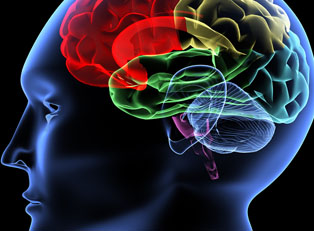The news that your child has cerebral palsy can be traumatic for new parents. They may think the child has no future. The stress of caring for the child can cause families to break up on account of it. Depending on the severity of the disability, parents maybe forced to turn the child over to professional services for care. There is no cure for the disease, however the condition does not worsen.
Cerebral Palsy Information
It is, however, possible to improve one's condition. It is indeed hard to raise cerebral palsy afflicted children. Some of them cannot move their limbs. Some of them cannot chew and swallow, and food is admitted to them by means of catheters. Due to the disability, they fall behind normal children not only in physical, but also in intellectual development. Cerebral palsy is in almost all cases not inherited, but is developed as a result of oxygen deprevation or trauma to the brain during pregnancy or childbirth. The traumas can vary: skull damage, cerebral liquid defect, injuries, hemorrhage and hematomas of the upper parts of the nervous system.
Cerebral Palsy Symptoms
Not every case of slight underdevelopment or motor skills problems should be ascribed to CP. The symptoms range between hardly visible clumsiness to heavy muscular spasticity (tenseness) that hinders movements of the child's limbs that could confine the child to a wheelchair. The severity of such developments is directly linked to the damage to the nervous system. They range from insignificant deviations, noticed only by the professional medical personnel, to evident traumas, the result of which are obvious to the naked eye of the parents. Cerebral palsy can be hard to detect in a newbornis, but it becomes more evident as teh child ages. Early CP signs are lack of control of one's head, poor abilities at turning around, grasping objects with his hands, sitting without being upheld, crawling and walking. Another evident symptom is the delay of unconditional reflexes, which are usually gone within 3-6 months after birth. One-sidedness can also be the side of cerebral palsy, as the child may favor his right or left hand and foot by the 18th month. Among other symptoms of CP are pathological muscle tonus, pathological movements, skeletal deformations, joint contracture, delay in mental development, convulsions, speech impediments, loss of hearing, vision defects, and problems with urination and bowel control.
Cerebral Palsy Treatment
The sad reality is that there is no cure for CP, but there are certain therapies that can better the condition of the child. There are physical and psychological exercises available that may help decrease the neurological defect. If cerebral palsy therapy is used early on, it helps get rid of certain development impediments and allows the CP child to carry on his tasks and functions. If proper therapy is directed at various cerebral palsy symptoms (speech impediments, physical and mental development, convulsions, etc), then the child can have a better quality of life. There is some hope concerning cerebral palsy with new developments in stem cell research and treatment.



